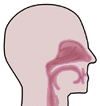  |
||
 |
November 2018The current unrecognized epidemic of smell dysfunction in the United StatesThere is an estimated 21 million people with smell dysfunction in the United States. However, most people in the U.S. are unaware of the existence of this problem. Most physicians are also unaware of this problem. Indeed, there is no specific medical specialty to evaluate or treat this problem. These issues comprise an unrecognized epidemic of smell dysfunction occurring in the U.S. Smell dysfunction comprises patients with loss of smell acuity, the presence of distorted perception of external odors (aliosmia) and the presence of distorted smells in the nose in the absence of any odor (phantosmia). These symptoms most commonly occur after a viral-type illness (about 25%), allergic rhinitis (about 20%), head injury (about 15%) and a variety of other illnesses including Parkinsonism, Alzheimer disease and other degenerative neurological disorders. The current view of the pathology which generates these symptoms is that some neurological abnormalities occurred either in the olfactory nerves or in the brain. However, recent studies have demonstrated that the underlying cause of these symptoms is not neurological in nature but usually biochemical related to loss of olfactory receptor function due to inhibition of biochemical activation and signaling in stem cells upon which olfactory cell growth and development depend. The recognition that biochemical treatment of this stem cell pathology results in activation of specific sensory cell signaling which improves smell dysfunction demonstrates the biochemical basis of this unrecognized epidemic.
|
|